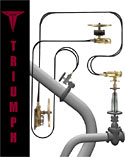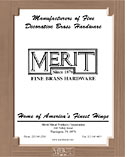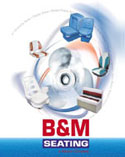|
|
|
|
Catalogs
A
catalog is generally a large collection of multiple products consisting
of many pages bound together. Prices are usually, but not necessarily,
included. Pages can be stitched together with staples or perfect bound
like a magazine. They can also be bound in a three ring binder for future
flexibility, when product specifications change or products are added.
A catalog can be printed on various types of paper, referred to as stock
in the printing world. Catalogs may be printed in black and white, one
color, two colors, three colors, four colors, or any combination of these.
Four color printing uses combinations of cyan, magenta, yellow, and black
and allows for 50,000 possible different colors. A catalog is a handy
reference for salesmen as a wealth of information about a range of products
collected in one place. It is also a useful tool to allow a customer to
get exactly what they want with minimal hassle.
Dynamic Digital Advertising's designers often provide multiple initial
layouts for client to choose among. Once a particular look is chosen,
the designer works out a demo design to give a better feel for the layout.
Catalog designs can depend on the number of products, the type of products,
and the type of binding desired. The designer and the client work out a
schedule of supplying information, approving pages, and proofreading content.
A client can provide product information in waves as successive parts
of the catalog are completed and approved. Clients can provide information
in many formats, such as transparencies, slides, negatives, prints, digital
disks, or the products themselves. Often a designer is given images from
a previous catalog and must then adjust them to fit in with the look of
the new catalog, such as changing background colors or removing backgrounds
entirely. The designer works through the catalog piece by piece with constant
input from the client. The designer and the client interact privately
during this design process via telephone, email, and the internet. The
design-in-progress can be displayed in a private folder on the web; a
client may offer advice while looking directly at the design without needing
to be at Dynamic Digital Advertising in person.
The catalog is proofed many times before it is finally printed to ensure
that every letter and picture are as the client desires. Clients get a
free blue line check, which is a complete black and white printing of
the catalog, before the catalog is sent to the printer. A black and white
print prototype is usually sufficient; however, for color critical catalogs,
such as apparel and paints, a color print is available at extra charge.
A designer must create a catalog with an eye on page count for the final
printing. Catalog pages are printed in signatures, batches of 4, 8 ,16,
and 32 pages before they are assembled into the final piece. Dynamic Digital
Advertising has created catalogs from as small as 12 pages to as large
as 250 pages.
Many companies can do great catalogs; the challenge is to do a great catalog
with a modest budget. Historically, multiple specialized people worked
on a catalog. One handled layout. Content was provided in typed pages,
and the layout person had to spec type. There had to be a product photographer,
a proofreader, and paste up artists to create boards before going to film.
Now that printing can be digital, one talented person can create a catalog,
but that designer must be skillful and well organized. Dynamic Digital
Advertising is proud of its proven process of design, from conception
to proofing to printing, and offers a range of services to assist the
client to create a solid catalog. Products can be digitally photographed
to present them in the best light possible. Images supplied by the client
can be scanned at high resolution and digitally manipulated. Illustrations
and 3D models can also be used to create just the right look. Dynamic
Digital Advertising also provides copy writing and multi-stage proof reading
to create a useful, elegant, and affordable selling device for the client.
|
|















